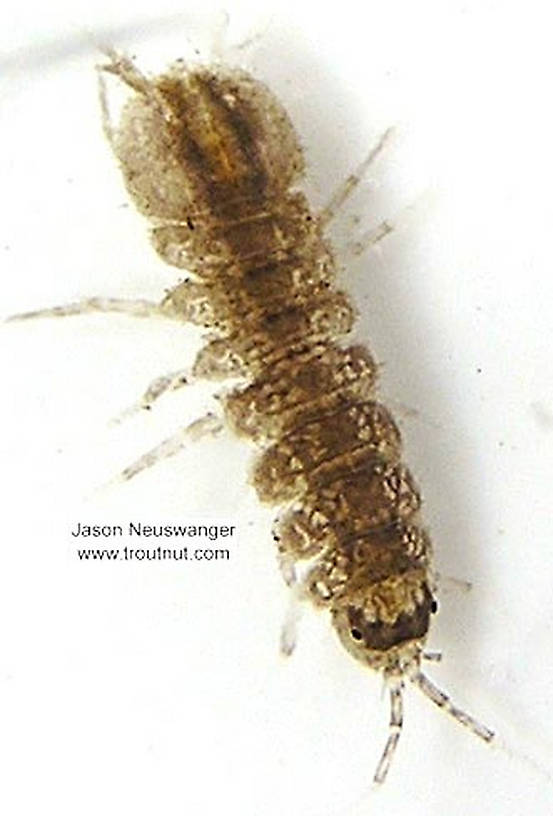
Salmonflies
Pteronarcys californica
The giant Salmonflies of the Western mountains are legendary for their proclivity to elicit consistent dry-fly action and ferocious strikes.
Featured on the forum

This one seems to lead to Couplet 35 of the Key to Genera of Perlodidae Nymphs and the genus Isoperla, but I'm skeptical that's correct based on the general look. I need to get it under the microscope to review several choices in the key, and it'll probably end up a different Perlodidae.

Troutnut is a project started in 2003 by salmonid ecologist Jason "Troutnut" Neuswanger to help anglers and
fly tyers unabashedly embrace the entomological side of the sport. Learn more about Troutnut or
support the project for an enhanced experience here.
Cress Bugs
Like most common names,"Cress Bug" can refer to more than one taxon. They're previewed below, along with 1 specimen. For more detail click through to the scientific names.
Arthropod Family Asellidae
These are pretty much always called Cress Bugs.
Cress Bugs are a common invertabrate in PA spring creeks. They are significant food forms for trout where found in abundance.
See 1 more specimen...
Arthropod Genus Caecidotea
These are pretty much always called Cress Bugs.
See 1 more specimen...
Arthropod Order Isopoda
These are sometimes called Cress Bugs.
Sowbugs are not quite as prolific or as important as scuds (Amphipoda), but in certain waters they are more common and serve the same role.
They should not be imitated with the same patterns because they are much more wide and tend to sprawl their legs to the side instead of tucking them neatly under the body. They crawl around instead of swimming, so they are probably best imitated with a dead-drift.
They produce new broods once every two months, allowing them to populate a stream very quickly if enough food is there to support them.
This order also includes popular terrestrial species commonly known as pillbugs or rolly polies. They aren't known to be relevant to fly fishermen.
They should not be imitated with the same patterns because they are much more wide and tend to sprawl their legs to the side instead of tucking them neatly under the body. They crawl around instead of swimming, so they are probably best imitated with a dead-drift.
They produce new broods once every two months, allowing them to populate a stream very quickly if enough food is there to support them.
This order also includes popular terrestrial species commonly known as pillbugs or rolly polies. They aren't known to be relevant to fly fishermen.
See 1 more specimen...


